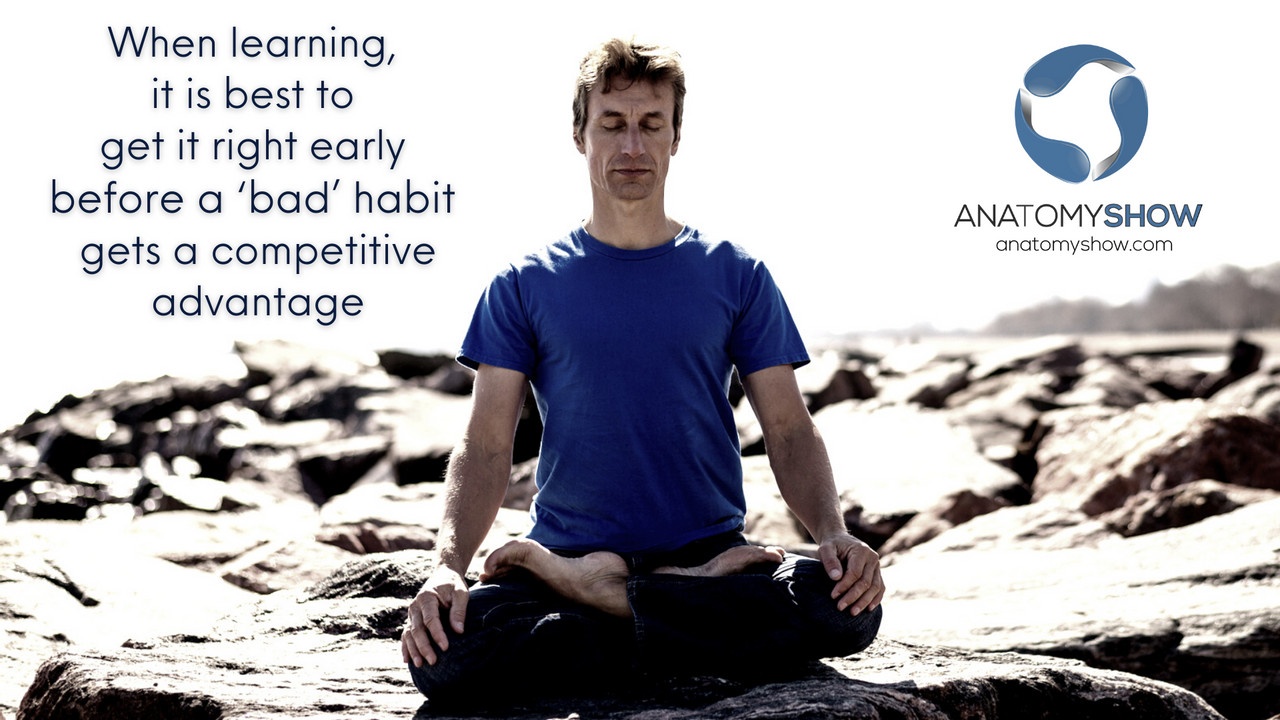
How to Avoid Bad Habits (and create better ones)
May 06, 2021We're probably all familiar with at least some of our bad habits.
Maybe this starts with how we (don't) get out of bed in the morning, or the distractions that keep us from our morning practice. Or was that efficient work? During our Yoga practice, do we favour certain postures and avoid others, possibly more challenging ones without really trying to modify them in a way that makes the accessible to us?
Ask yourself too, how open are you to learning new things. New practices in yoga, new recipes for your kitchen, a new program for the computer, or really taking the time to learn that breathing technique that was supposed to change your stress levels?
Anything we learn establishes new pathways and connections in the brain. This ability of our brain to change, modify and adapt to the daily regular demands is called neuroplasticity.
When we practice something new more often, these new brain connections become increasingly stronger with continued practice. This strengthening process of neuronal (nerve cell) pathways is a good thing when what we learn is in our favour. This could be learning language, memorizing names or a new movement or breathing skill.
Most people have established very strong and functional nerve pathways to stand, walk, type (at least somewhat), ride a bicycle or drive a car. Remember these were also new skills that we learned at some point. Learning is the building of new pathways and nerve cell connections in the brain. The trouble starts when we’re not learning correctly. Or we are learning something that might ‘get the job done’, but isn’t actually that helpful for us into long term. Think of it as calling someone ’Sue’ when their actual name is ‘Sean’. Every time we see that person, we quickly call them Sue, because of the way we learned the name incorrectly.
In yoga practice we observe quite frequently the bad habit of people not knowing how to do forward bends correctly. This is the sole reason for back pain resulting from yoga practice. And this is still the most frequent complaint from yoga practitioners.
How did we get to these bad habits? The bad habit originates usually from incorrect associations. Mistaking one name for another is easy to understand. For some reason we form an association between a particular person with a name that is actually not theirs. After the initial meeting we think about them repeatedly as “Sue” and the misassociation habit is setting itself up.
In yoga practice the bad habit is created pretty much the same way, it’s only a little bit more complex. A combination of misidentification of our abilities, what we think we are supposed to do, what we think we are doing, already existing patterns of tension and mobility, maybe discomfort, all come together to try new movements. And then the class moves on to the next posture.
Boom, that was the first round of learning. Next time the same movement or pose comes up, we might recall some of what we did before and repeat it. Back pain is unlikely to arise the first time we try a pose. It’s often a result of wear and tear, lack of support and coordination in the complexity we created.
Now we’ve been doing the new posture for a few months. We feel or think, we’ve ‘got it’. When a teacher come around to instruct us to do the posture or movement differently, we are surprised why this needs to be changed in the first place, and how hard it is to approach the posture with new muscle engagements and activations.
This is the ‘competitive’ nature of bad habits. Once set up, they are more ‘entrenched’ in the brain and are an easier to execute pathway / action than the weaker, less established new movement pattern.
These misassociated practices can create bad habits for everything we interact with in our life. Movement, posture or breathing patterns, even thoughts create habits of processing in our brain.
Trying to change bad patterns is a lot more work than establishing new ones. Established habits are stronger and will compete for their survival. Making changes requires clarity. We need to know what and how we can do things differently. For example we couldn’t change the way we addressed someone incorrectly, unless we firstly realized we had the wrong name and secondly found out what the correct one is.
For movement and posture practices, we need to similarly realize that what we’ve been doing wasn’t ideal, or unsustainable, along with a resolve to actually want to change this. Then we need to find out how to practice better, what changes to make to our muscle engagement patterns or which joints to prioritize for movement.
After that we begin putting the new better habits into practice. To achieve successful change of bad habits to better habits, we need to pay attention. Mindfulness, attention to what we are doing is essential for neuroplasticity.
Over some time, depending on the complexity, already leased duration of the habit, and resolve / attention and awareness our brain will build and preferentially use the new pathways to direct movements, hold postures and remember names.
You can now probably understand that it is much better to learn and practice right from the start. Get things right with good education. This includes good teachers, good materials, as well as attention and awareness. This saves time, effort and builds better habits.
The AnatomyShow yoga anatomy courses are build on thorough research, decades of experience and time tested principles.
Take a course today to build better habits in preference to bad ones.
Don't miss what's happening!
New posts, education, and movement ideas delivered to your inbox.
We hate SPAM. We will never sell your information, for any reason.

